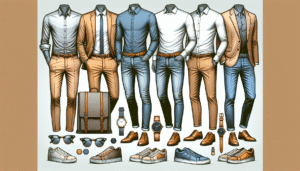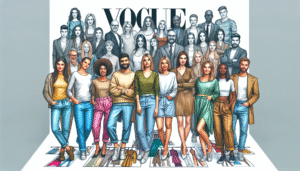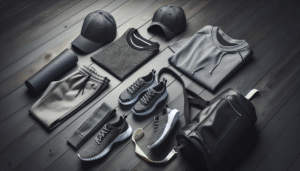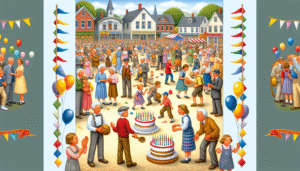
The Ultimate Guide to Vintage Shopping
Unearthing Treasures: Why Choose Vintage?
Vintage shopping offers a unique opportunity to own pieces with history, character, and individuality. Beyond the thrill of the hunt, it’s a sustainable choice, reducing textile waste and promoting a circular economy. Vintage clothing and accessories often boast superior craftsmanship and durable materials compared to fast fashion, leading to longer-lasting wardrobe staples. From timeless classics to quirky statement pieces, vintage allows for self-expression and a curated style that stands out from the crowd. Furthermore, vintage shopping can be surprisingly affordable, offering high-quality items at a fraction of the original price.
Navigating the Vintage Landscape: Where to Shop
The hunt for vintage gems can take you to a variety of exciting locations. Thrift stores are a treasure trove of affordable finds, demanding patience and a keen eye. Consignment shops curate higher-end vintage pieces, often featuring designer labels and meticulously preserved garments. Antique malls offer a curated mix of vintage clothing, furniture, and collectibles, providing a one-stop shop for a diverse range of vintage finds. Online marketplaces, like Etsy and eBay, offer a vast selection, but require careful vetting of sellers and attention to garment details. Specialized vintage boutiques focus on specific eras or styles, providing expert curation and authentication. Finally, flea markets and estate sales offer a unique, immersive experience, but require early arrival and a competitive spirit.
Decoding the Decades: A Vintage Style Guide
Understanding the key characteristics of different eras can significantly enhance your vintage shopping experience. The 1920s flapper dresses, beaded embellishments, and art deco influences offer a touch of glamour. The 1930s bias-cut gowns, elegant silhouettes, and delicate lace evoke old Hollywood charm. The 1940s brought tailored suits, A-line skirts, and wartime practicality. The 1950s introduced full skirts, cinched waists, and feminine silhouettes. The 1960s ushered in mod styles, mini skirts, and bold prints. The 1970s embraced bohemian flair, flared jeans, and earthy tones. The 1980s were defined by power dressing, shoulder pads, and vibrant colors. The 1990s grunge aesthetic, slip dresses, and oversized silhouettes continue to inspire contemporary fashion.
Authenticating Your Finds: Spotting the Real Deal
Distinguishing genuine vintage from reproductions requires careful examination. Check for fabric composition: natural fibers like cotton, linen, and silk were common in older garments. Examine the construction: vintage pieces often feature hand-stitching, higher-quality seams, and intricate detailing. Scrutinize the labels: vintage labels often differ in design and material from modern reproductions. Analyze the zippers: metal zippers, hook-and-eye closures, and button styles can indicate a garment’s age. Research the brand: familiarize yourself with the history and characteristics of specific vintage brands.
Caring for Your Vintage Treasures: Preservation Tips
Proper care ensures the longevity of your vintage finds. Always check the care label before cleaning. Hand-washing delicate items in cold water with a mild detergent is often recommended. Dry cleaning is suitable for certain fabrics, but always consult a reputable cleaner specializing in vintage garments. Air drying is preferred over machine drying to prevent shrinkage and damage. Store vintage clothing in a cool, dry place, away from direct sunlight. Use padded hangers for delicate garments and avoid overcrowding closets.
Sizing and Alterations: Achieving the Perfect Fit
Vintage sizing differs significantly from modern sizing. Always consult size charts and take accurate measurements before purchasing. Be prepared for alterations: a skilled tailor can adjust vintage garments to achieve a perfect fit while preserving the original design. Consider creative alterations: transforming vintage pieces into something new can breathe new life into dated styles.
Building Your Vintage Wardrobe: Strategic Shopping
Start with versatile basics: a classic trench coat, a well-tailored blazer, or a simple black dress can form the foundation of a vintage wardrobe. Invest in statement pieces: a unique beaded handbag, a vibrant printed scarf, or a pair of eye-catching earrings can elevate any outfit. Consider your personal style: focus on eras and styles that resonate with your aesthetic. Be patient and persistent: building a curated vintage wardrobe takes time and dedication.
Sustainable Style: The Environmental Impact
Choosing vintage is an eco-conscious decision that reduces textile waste and promotes sustainable fashion practices. By giving pre-loved clothing a new home, you minimize the demand for new production, which consumes significant resources and contributes to pollution. Embrace the concept of slow fashion: prioritizing quality over quantity and investing in timeless pieces that will last for years to come.
The Thrill of the Hunt: Embracing the Experience
Vintage shopping offers a unique and rewarding experience. Embrace the element of surprise: you never know what treasures you might uncover. Enjoy the process of discovery: researching different eras, exploring various shops, and learning about the history of fashion. Connect with a community: vintage shopping can connect you with like-minded individuals who share your passion for unique and sustainable style.
Investing in History: The Value of Vintage
Certain vintage items can appreciate in value over time, particularly rare designer pieces, limited edition items, and historically significant garments. While not all vintage purchases are investments, understanding the potential for appreciation can add another layer of enjoyment to the experience. Researching designers, brands, and historical periods can help you identify pieces with potential investment value.















